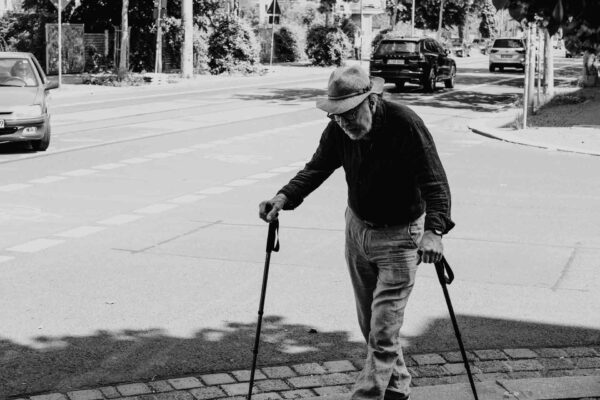

Why do people end up all curled up? What happens to the body over time?
Ageing is a normal degenerative process affecting us all over our lifetime and actually starts much earlier than you might expect. We lose up to 8% of muscle mass each decade from the age of 30 and you can expect to lose around 1/2 inch in height, from your tallest measurement every 10 years, more noticeable aged 70 and over.
Factors that affect posture
1. The spinal discs- between each vertebra of the spine there is a disc which acts as a shock absorber. The disc has a gel like centre which dries up and hardens with age and they are less able to rehydrate. This is what causes the height of the individual to shrink.
2. Decades of poor posture combined with less flexibility and strength can lead to the typical rounded back and stooped posture.
3. Bones become thinner- Osteopenia is the first sign of thinning followed by full blown osteoporosis. This is caused by a lack of calcium absorption and this is common in women after the menopause. Men also lose density after 65 years old. Loss of density in the spine can lead to vertebral collapse and changes in posture.
4. Weight gain-The weight gain with age tends to settle around the waist and begins from 30 years old to around 55 for men and 65 for women as lean muscle is replaced with fat. This added weight tends to influence the spinal posture
5. Any other underlying conditions such as osteoarthritis can affect the posture and the way the person stands and walks. There are also numerous neurological conditions that will compromise posture
6. Eyesight- This may mean that the person tends to look down more
7. Genetics- Some people are just lucky with their genes.
TIPS
1. Do not give up on your body
Take a look at your posture and try to stand up straight. Standing up tall helps us feel better, helps the lungs function better and is less tiring for the muscles and ligaments.
2. Move often
Do stand up regularly and do regular exercises to stretch stiff joints and muscles
3. Think posture
Think of your sitting posture and chose the right chair for the right activity. If an activity involves leaning the head forward be sure to take regular breaks.
4. Diet
Eat a good balanced diet and plenty of fluids. It is sensible to take Vitamin D supplements if you do not go outside much and especially in winter. Vitamin D plays a big part in the absorption of calcium in the body
see Vitamin D article
5. Activity is the key
The 65+ age group should engage in a minimum of 75 mins of vigorous activity i.e out of breath or 150 mins moderate activity which increases the breathing rate per week.
In addition, they should do twice weekly balance and co-ordination exercises and some strengthening exercises.
A sedentary lifestyle will lead to loss of muscle strength and reduced bone density. So find an activity you enjoy whether it be walking, yoga, Tai chi, dancing or anything else.

